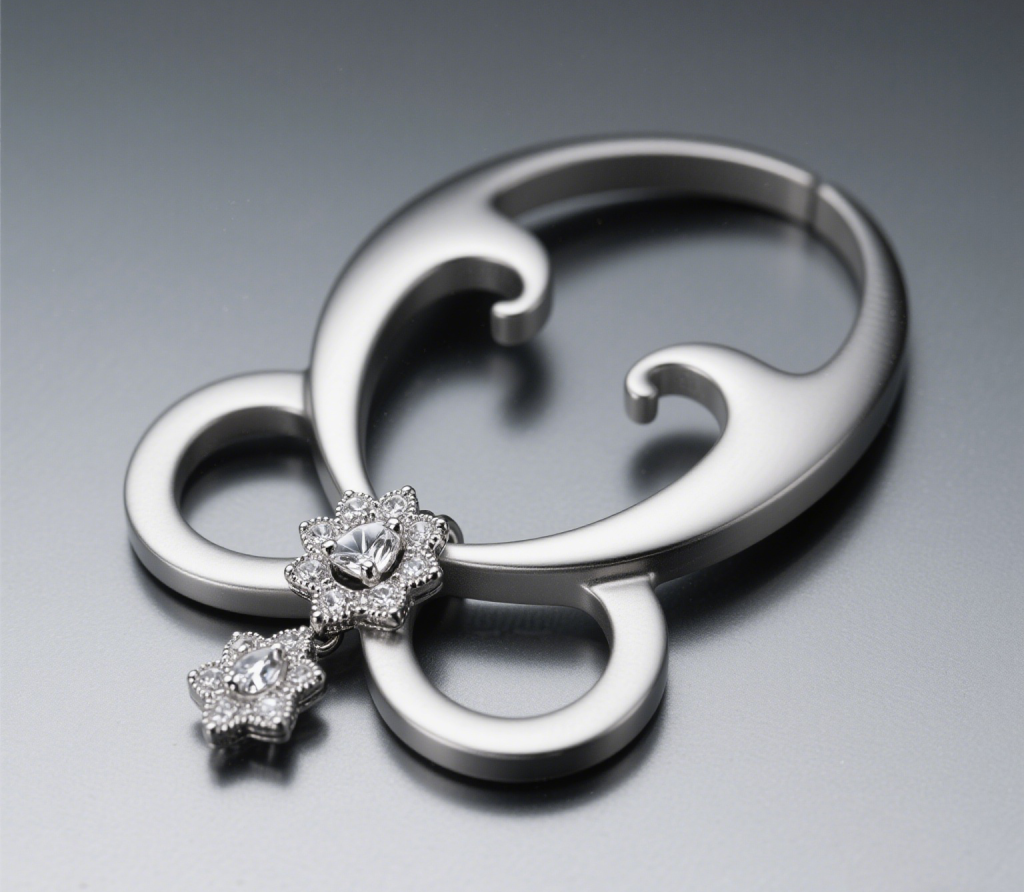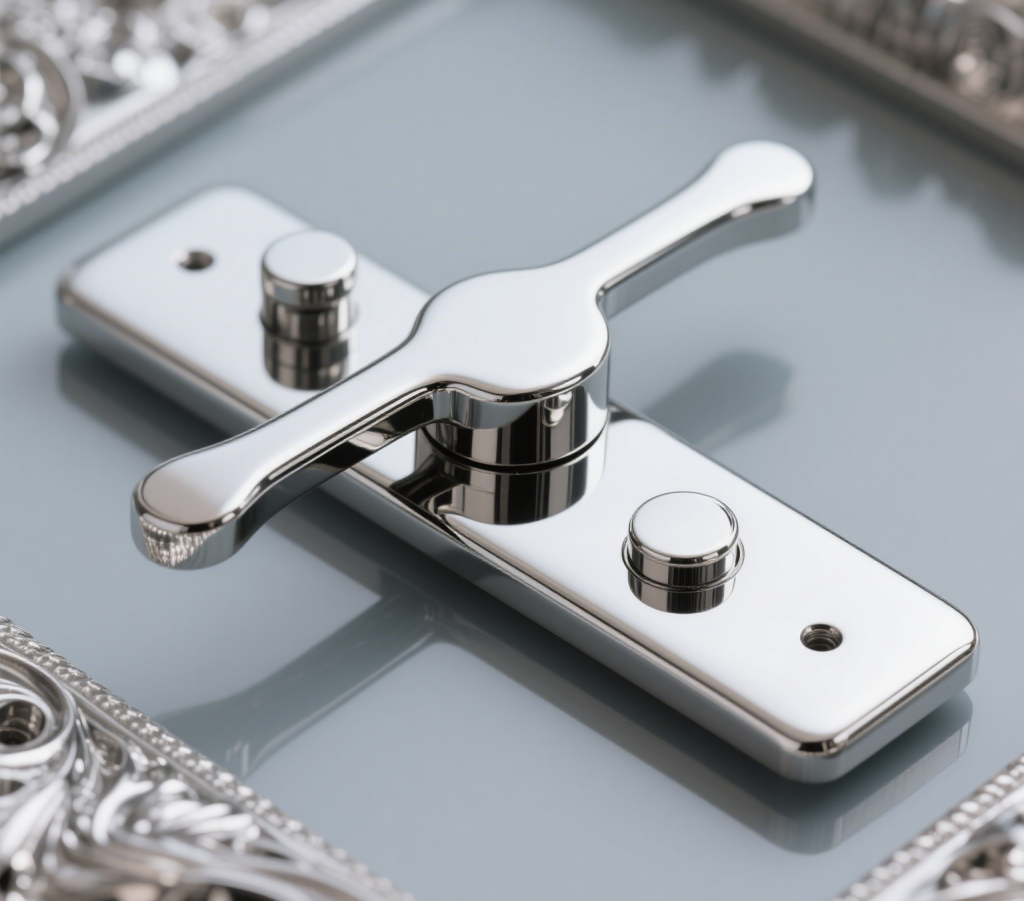Matte vs. Bright Silver Plating Differences
Silver plating is a practical and good-looking process that gives metal surfaces a fresh, shiny look. It’s used a ton in jewelry, tableware, tech gadgets, and industrial parts. As a factory focused on PVD coating machines, we know the ins and outs of surface treatments. Matte silver plating wins fans with its subtle, frosted vibe. Bright silver plating grabs eyes with its mirror-like shine. This article breaks down the differences between the two, covering looks, performance, and real-world uses. Key highlights of PVD coating technology are also included to assist in selecting the optimal metal plating solution.
1. Matte Silver Plating
What is Matte Silver Plating
Matte silver plating puts a layer of silver on materials like copper, stainless steel, or 925 silver using an electroplating machine. The focus is a non-reflective, frosted finish. The process includes:
- Surface Prep: Sandblasting or chemical treatments make a fine texture that scatters light to stop mirror-like reflections.
- Plating Solution: A silver plating solution without brightening agents ensures the silver layer has a natural matte look during the silver plating process.
- Material Choice: The roughness of stainless steel or copper boosts the matte effect in metal plating.
PVD technology, using vacuum technology, can also create a matte silver finish with sputtering deposition. It’s perfect for high-precision electronic parts in PVD plating.
How Unique is the Look
Matte silver has a soft surface, like frosted glass or velvet. It’s subtle but feels upscale. It stands out in these cases:
- High-End Design: In jewelry, silver plating for jewelry gives rings or bracelets a simple charm, great for everyday wear.
- Low-Glare Needs: For electronic device casings or optical parts, industrial silver plating cuts glare, making things easier on the eyes.
How Strong is the Performance
Matte silver plating isn’t just nice to look at. It’s super practical:
- Scratch Resistance: The textured surface hides scratches better than bright silver, making 925 silver plating durable for daily-use tableware or jewelry with silver plating flatware.
- Fingerprint Resistance: The frosted finish reduces fingerprints and smudges, so cleaning is easy.
- Conductivity and Corrosion Resistance: Silver’s top-notch conductivity and corrosion resistance perform great in electronic or aerospace parts for metal finishing.
- Coating Thickness: Usually 5-10 microns, it’s tough and budget-friendly. PVD coating with matte silver can be thinner, more even, and tougher against wear.
Where Does It Get Used
Matte silver plating has tons of uses:
- Jewelry and Decor: Adds a modern, low-key vibe to necklaces, earrings, and more with decorative silver plating.
- Electronics: Phone casings or smartwatches get a fingerprint-resistant, sleek look.
- Medical Equipment: Surgical tools use industrial plating of silver for antibacterial properties and no glare.
- PVD Applications: Magnetron sputtering adds silver layers to semiconductors or sensors with PVD coated stainless steel.
2. Bright Silver Plating
What is Bright Silver Plating
Bright silver plating deposits a silver layer through an electrochemical process, aiming for a mirror-like shine. The process includes:
- Polishing Prep: The base material needs to be polished smooth as glass.
- Plating Process: A silver plating solution with brightening agents creates that glossy look using coating equipment.
- Post-Treatment: Sometimes a silver rhodium plating layer or extra polishing boosts shine and durability.
PVD coating can also make a bright silver finish using thermal evaporation or sputtering. It’s great for super-thin coatings on precision parts in PVD plating, a specialty at Foxin.
How Eye-Catching is the Look
Bright silver plating looks like a mirror, reflecting light with a high-end, luxurious feel. It works well for:
- Fancy Silverware: Knives, forks, or candlesticks with silver plating flatware steal the show.
- Jewelry Design: Watches or necklaces with silver plating for jewelry have a bold, blingy vibe.
- Car Decor: Badges or trim pieces with metal plating make vehicles look upscale.
The mirror finish shows fingerprints and scratches easily, so it needs regular care.
How’s the Performance
- Corrosion Resistance: Silver naturally resists corrosion, and the smooth surface limits chemical damage, great for humid settings in the silver plating process.
- Conductivity: Silver’s high conductivity makes bright silver common in electronic parts for metal plating.
- Maintenance Needs: The mirror finish scratches easily and isn’t super hard, so clean it with a soft cloth.
- Coating Thickness: Usually 3-8 microns, it’s decorative and solid. PVD coating for bright silver can go as thin as 1 micron for high-precision uses.
Bright silver plating balances beauty and function but needs some upkeep.
Where Does It Get Used
Bright silver plating covers both lifestyle and industrial needs:
- Luxury Tableware: Silver plating flatware for formal events looks classy.
- Fashion Accessories: Adds sparkle to classic designs with decorative silver plating.
- Car Decor: Trim or badges get a luxe upgrade.
- Electronic Parts: Connectors use PVD plating for conductivity and durability.

3. Electroplating vs. PVD
The Science
Want to know why silver plating and PVD are so awesome? Here’s the breakdown. Silver plating uses electrochemical deposition:
- Plating Solution: A silver plating solution with silver ions supplies the metal, and eco-friendly formulas are getting popular.
- Electrode Setup: The base material is the cathode, a silver plate is the anode, and current “sticks” silver ions to the surface using coating equipment.
- Surface Control: Matte silver uses sandblasting for texture, while bright silver relies on polishing and brightening agents in the silver plating process.
PVD, or physical vapor deposition, works differently in a vacuum technology setup. It uses magnetron sputtering or thermal evaporation to deposit silver atoms onto the surface with PVD coating. Compared to electroplating, PVD silver layers are:
- Thinner and More Even: As low as 0.5 microns, perfect for precision electronic parts.
- Super Eco-Friendly: No chemical solutions, less waste in PVD plating.
- Extra Durable: Can pair with titanium nitride coating or gold PVD coating for added hardness.
Silver’s conductivity and corrosion resistance shine in both electroplating and PVD. Foxin’s sputtering machine precisely controls these traits.
Quality Control
Foxin has run production lines for years and knows quality control is crucial. Silver plating and PVD coating quality are ensured with these methods:
- Adhesion Testing: Tape tests or cross-hatch methods check if the coating sticks well in silver plating service.
- Thickness Measurement: X-ray fluorescence tools confirm even coating thickness, ideally 5-10 microns.
- Corrosion Testing: Salt spray tests mimic humid conditions to verify corrosion resistance for industrial silver plating.
- Surface Inspection: Microscopes check texture or shine to ensure matte or bright silver meets standards with PVD coated stainless steel.
These steps ensure your coating lasts, especially for high-end jewelry or aerospace parts.
4. Matte vs Bright Silver Plating
Looks Comparison
- Matte Silver Plating: Soft, non-reflective, modern, and subtle. Great for minimalist designs.
- Bright Silver Plating: Mirror-like shine, luxurious, and eye-catching under lights. Shows fingerprints and scratches more on silver plating copper.
Performance Comparison
- Durability:
- Matte Silver: Textured surface resists scratches, making 925 silver plating easy for daily use.
- Bright Silver: Smooth surface scratches easily, so handle with care using silver rhodium plating.
- Maintenance:
- Matte Silver: Simple to clean with a soft cloth, resists fingerprints.
- Bright Silver: Needs regular polishing, which takes effort with a silver plating kit.
Cost Comparison
- Process Complexity:
- Matte Silver: Needs sandblasting or chemical etching, so single-piece costs are a bit higher.
- Bright Silver: Polishing is more standard, cheaper for bulk production with an electroplating machine.
- PVD Silver Coating: High equipment cost, but low running costs with PVD coating machine price.
- Market Positioning:
- Matte Silver: Modern vibe, appeals to younger buyers.
- Bright Silver: Traditional luxury, common in high-end silver plating flatware, with premium brand pricing.
Use Case Comparison
- Matte Silver: Everyday jewelry with silver plating jewelry, modern tableware with silver coating, or electronic casings.
- Bright Silver: Gift silverware, car decorations, or flashy jewelry with gold plating silver jewelry.
Quick Choice Guide
| Feature | Matte Silver | Bright Silver |
|---|---|---|
| Look | Soft, modern, low-glare | Shiny, luxurious, high-gloss |
| Durability | Scratch-resistant, anti-fingerprint | Prone to scratches, needs care |
| Maintenance | Easy cleaning, low cost | Regular polishing, higher cost |
| Cost | Slightly pricier process, good for bulk | Cheaper in bulk, high-end premium |
| Use Case | Daily wear, modern designs | Gifts, collectibles, flashy events |
Common Issues and Fixes
Running production lines for years, Foxin has seen silver plating hiccups. Here are common problems and solutions:
- Uneven Coating: Check silver plating solution concentration or current stability. PVD equipment with a sputtering machine fixes this with precise sputtering settings.
- Too Many Scratches: Bright silver can use silver rhodium plating for protection. Matte silver naturally resists scratches, so it’s less hassle.
- Fading or Corrosion: Ensure coating thickness is enough (5 microns or more) or use PVD plating for better corrosion resistance.
- Maintenance Hassle: Bright silver needs regular care with silver plating kits. Matte silver just needs a quick wipe.
These tips save time and money.

5. How to Pick the Right Silver Plating Type
Check the Use Case
The purpose is everything. Matte silver plating is tough and easy to care for, perfect for everyday jewelry like silver plating jewelry or household silver plating flatware. A matte silver ring can handle daily wear without scratching. Bright silver plating shines and grabs attention, great for wedding silverware or collectible watches with gold electroplating for extra bling. PVD coating is the go-to for precision electronics or medical parts.
Check the Budget
Budgets need to be clear. Matte silver’s sandblasting process costs more per piece, but it’s cost-effective for bulk production with coating equipment, like restaurant tableware. Bright silver’s polishing process is cheaper, but high-end markets jack up prices with silver plating service. PVD equipment has a big upfront cost with PVD coating machine price, but long-term operating costs are low, ideal for high-precision projects.
Check the Style
Matte silver is subtle and modern, fitting minimalist earrings or phone casings with silver coating. Bright silver is classic and luxurious, perfect for traditional silverware or vintage silver plating for jewelry. PVD technology can nail both matte and bright silver looks with PVD coating stainless steel, so you pick the vibe.
Check the Maintenance
Maintenance matters a lot. Matte silver resists scratches and cleans easily, great for busy lifestyles with 925 silver plating. Bright silver needs regular polishing with a silver plating kit, better for display pieces like silver rhodium plating. PVD plating is super durable with minimal upkeep.
Choice Checklist
- Use Case: Daily wear picks matte silver, gifts pick bright silver, precision parts pick PVD.
- Budget: Bulk orders go matte silver, high-end single items go bright silver, long-term investment goes PVD.
- Style: Modern minimalist picks matte, classic luxury picks bright silver.
- Maintenance: Low upkeep picks matte or PVD, regular polishing picks bright silver.
6. Future Trends
Silver plating and PVD using vacuum technology are sparking new ideas:
- Green Processes: Non-cyanide plating solutions and PVD sputtering deposition make production more eco-friendly.
- Mixed Coatings: Silver plating paired with titanium nitride coating or gold PVD coating looks great and lasts longer.
- Smart Tech: PVD silver plating shines in 5G devices and wearable tech for industrial silver plating.
- DIY Trend: Home silver plating kits let people customize stuff at home with DIY silver plating.
These trends make silver plating more practical and cutting-edge.
Conclusion
Matte and bright silver plating both have their strengths. PVD coating adds new tricks to the mix. Think about your needs, budget, style, and maintenance habits to pick the right option. With Foxin PVD coating machines, your silver plating projects will look awesome and hold up strong!

